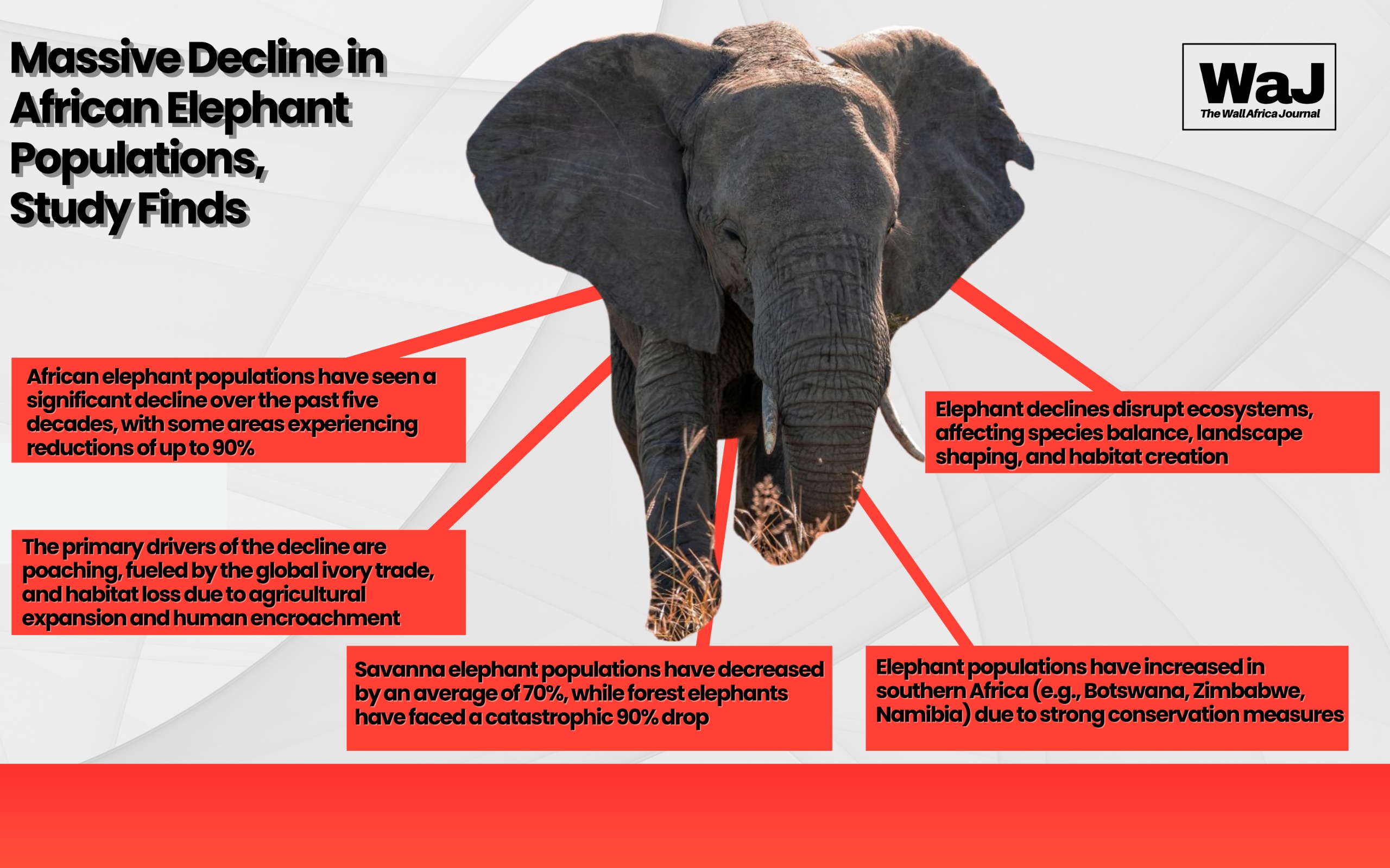New research highlights alarming losses in elephant numbers across the continent, underscoring the growing threat of poaching and habitat destruction.
A comprehensive study released this week reveals a sharp decline in African elephant populations over the past five decades, with some areas seeing reductions of up to 90%. The study, described as the most extensive assessment of its kind, examined population data from 475 survey sites across 37 countries between 1964 and 2016.
The findings are stark: savanna elephant populations have plummeted by an average of 70%, while forest elephants have faced a catastrophic 90% drop. On average, the elephant population at the surveyed sites has decreased by 77%. The primary drivers of these declines are poaching, fueled by the global ivory trade, and habitat loss due to agricultural expansion and human encroachment.
George Wittemyer, a wildlife conservation expert at Colorado State University and a lead researcher on the study, emphasized that while some populations have disappeared entirely, others have shown signs of recovery thanks to ongoing conservation efforts. He warned, however, that many lost populations are unlikely to rebound and that continued pressure from poaching and habitat destruction could lead to further declines.

Poaching remains a major threat to African elephants, particularly in regions with limited enforcement against illegal activities. Demand for ivory, particularly from markets in Asia, has driven the illegal killing of elephants, while habitat destruction, driven by agricultural expansion, continues to fragment their remaining territories.
While the situation is dire in many parts of Africa, southern Africa offers a glimmer of hope. In countries like Botswana, Zimbabwe, and Namibia, elephant populations have grown due to strong conservation measures, including anti-poaching efforts, habitat protection, and community-based initiatives. These successful conservation models serve as examples for other regions struggling with elephant population declines.
The study, published in the Proceedings of the National Academy of Sciences, did not attempt to produce a continent-wide population estimate, due to varying survey methodologies. However, independent estimates place the total population of African elephants at between 415,000 and 540,000 as of 2016.
Conservationists have expressed concern over the broader ecological impact of declining elephant populations. Elephants play a vital role in maintaining the balance of ecosystems, shaping landscapes, dispersing seeds, and creating habitats for other species. Their loss could have far-reaching consequences for biodiversity across the continent.
Despite the challenges, Wittemyer and his colleagues remain optimistic. They stress the importance of continued conservation efforts and emphasize that the successes seen in southern Africa provide hope that elephants can be protected and their numbers restored in other parts of Africa.
As one of the most sentient and intelligent species on the planet, African elephants remain crucial to the survival of many other species and the health of ecosystems across the continent. The need for concerted global action to secure their future has never been more urgent.


